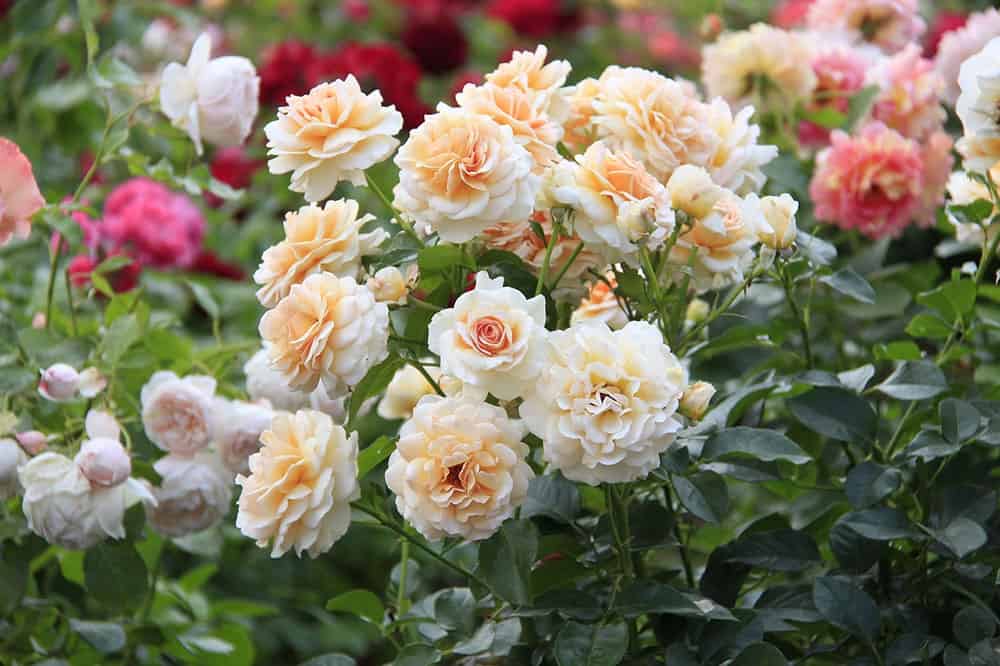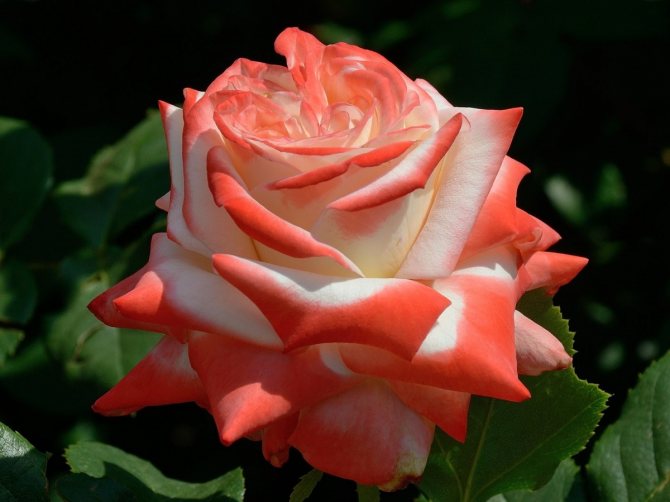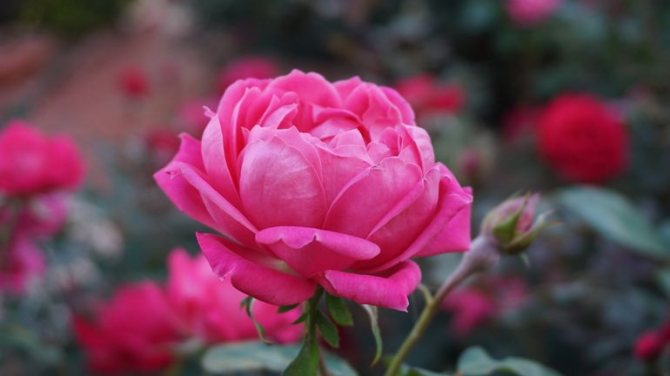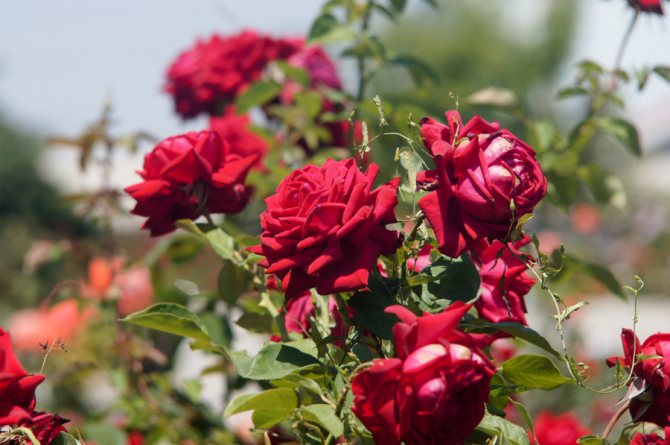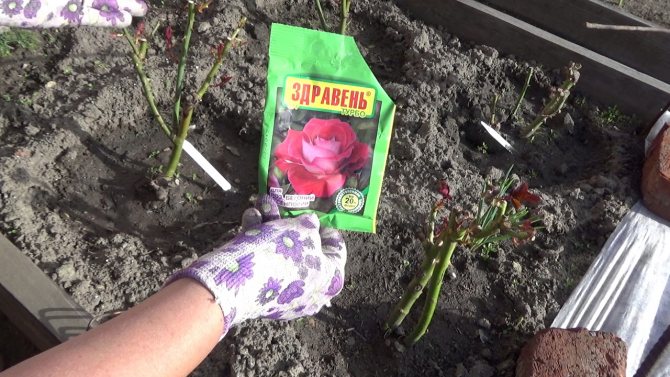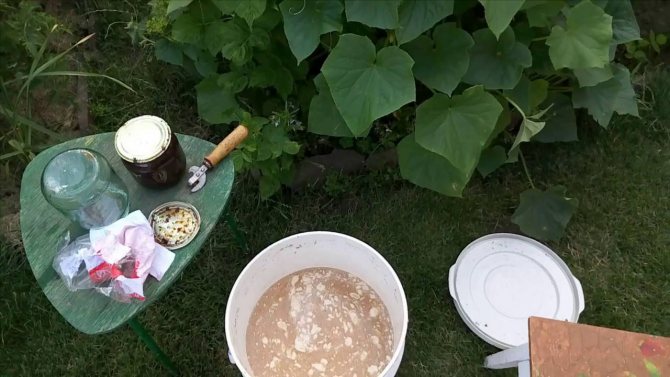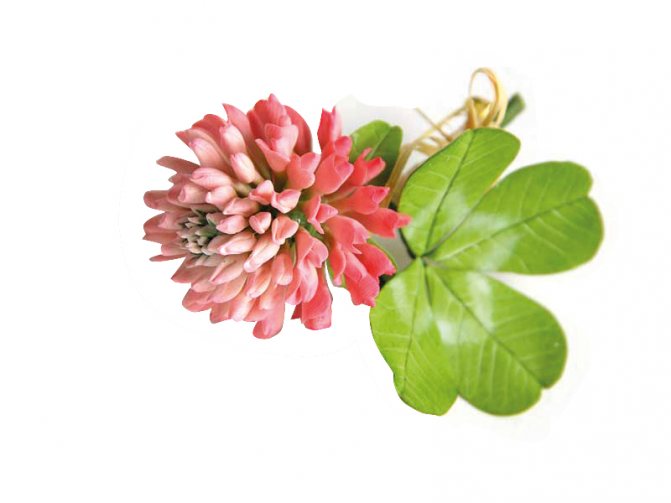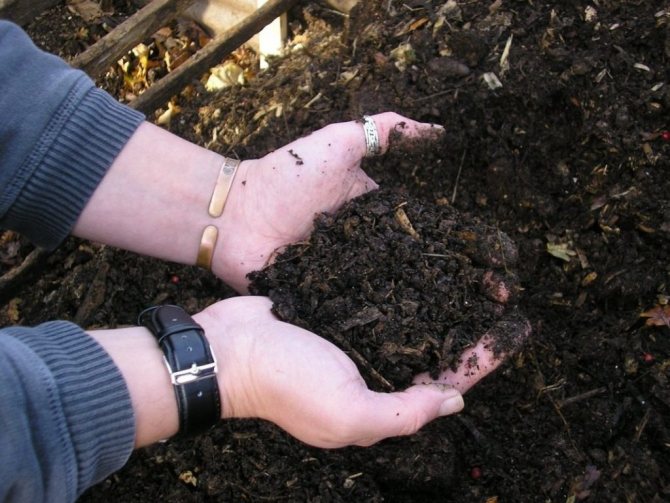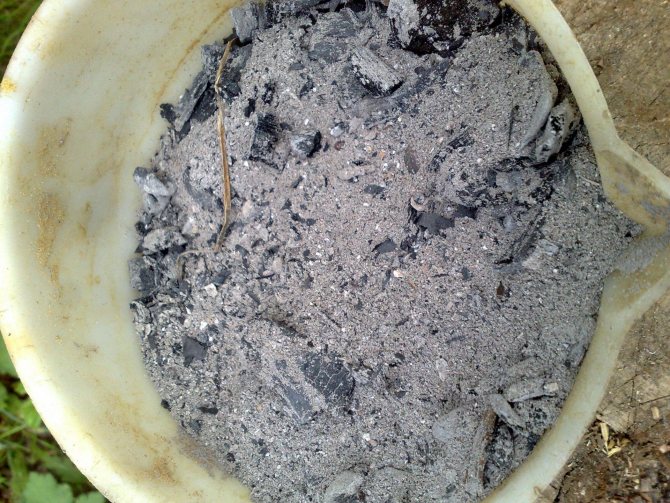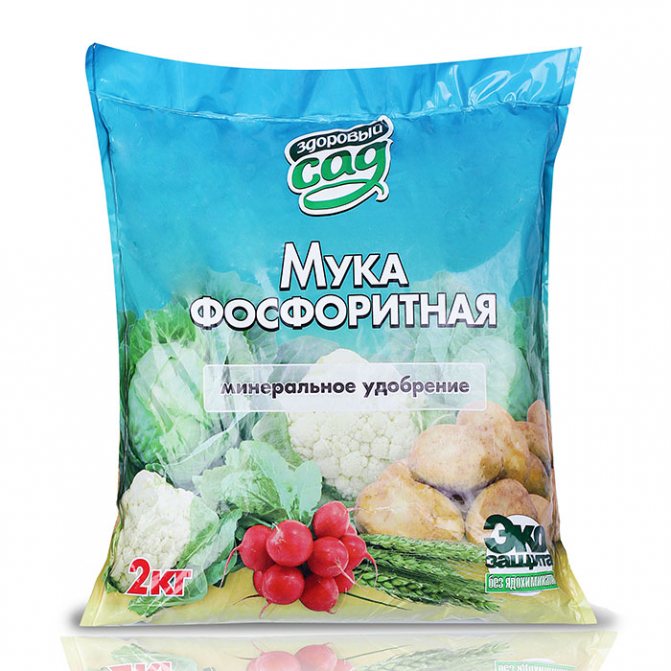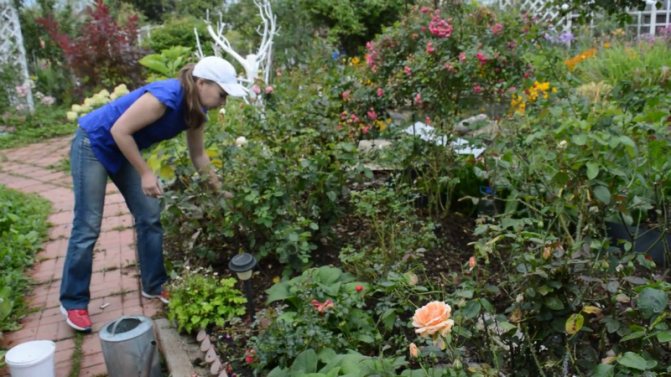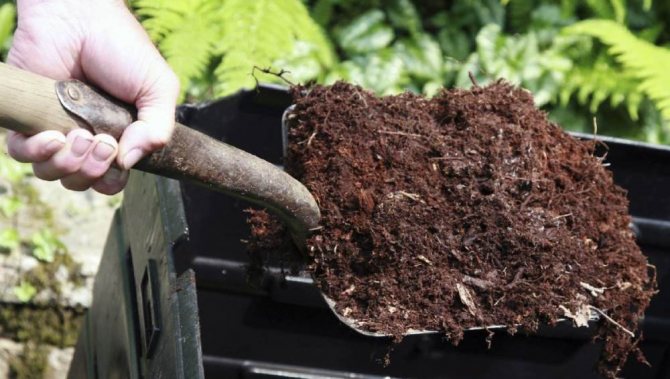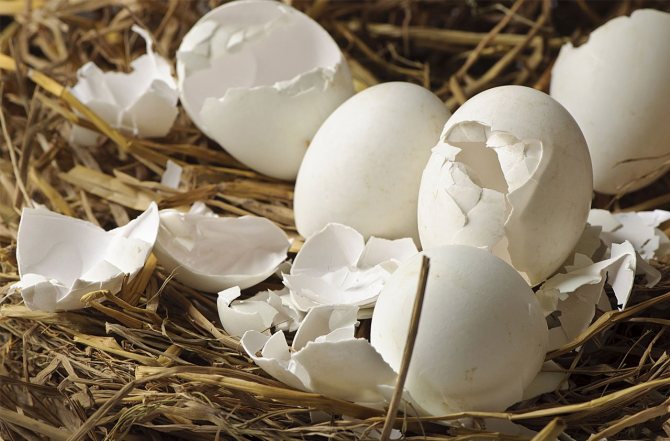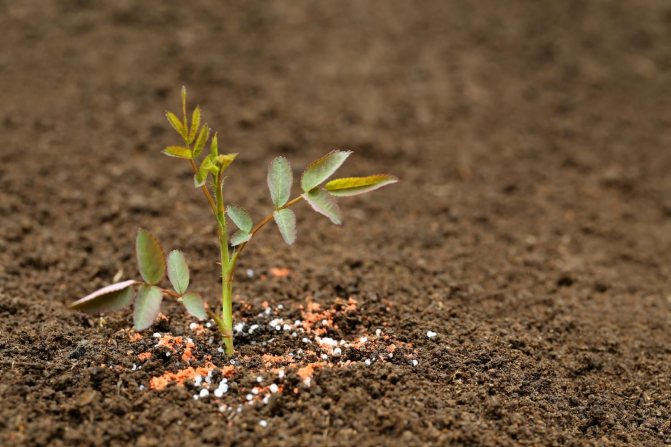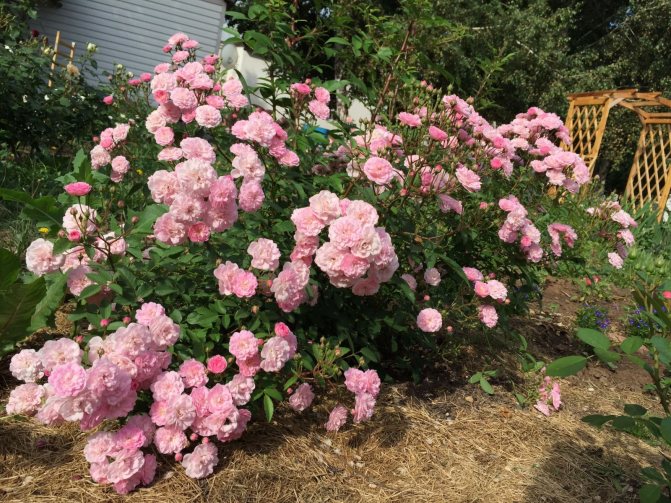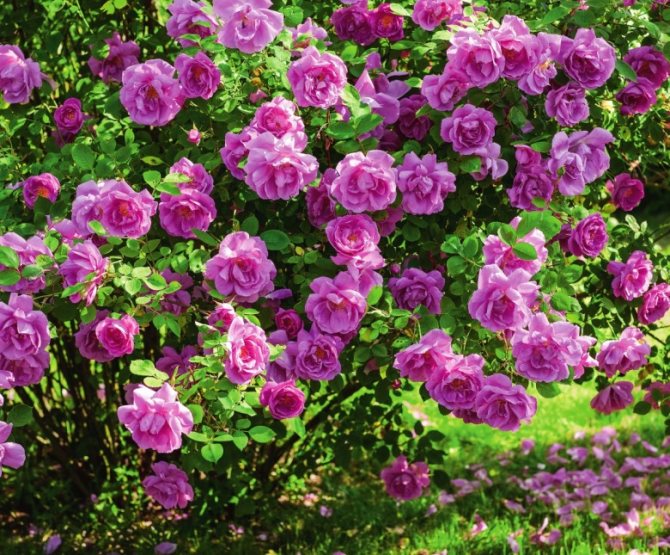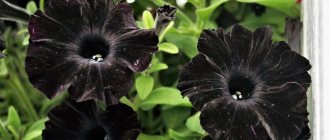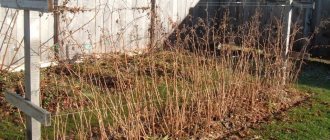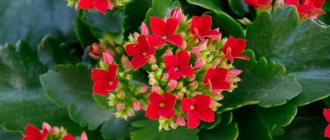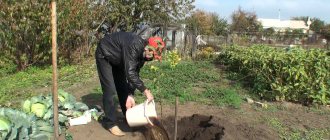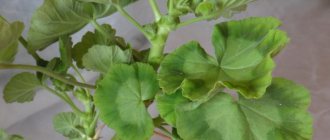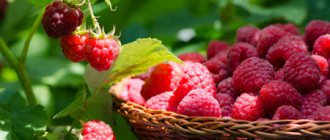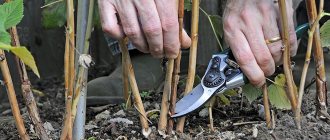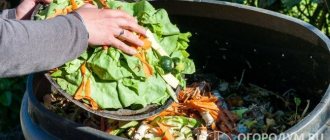Plants »Flowers
0
697
Article rating
Top dressing of roses in autumn is a mandatory event that ensures abundant and beautiful flowering of the decorative culture in the next season. It also helps the plants to more comfortably endure the cold, because they differ in average winter hardiness.
Pre-winter feeding of roses - the subtleties of events
Why feed roses in the fall?
Traditionally, roses are fed with fertilizers in the spring, before flowering, but over the summer the soil around the bushes is significantly depleted. After a winter dormant period in spring, rose bushes begin their active growth long before the moment when they can be fertilized.
Did you know? Fragrant rose oil is used to make 98% for women and 48% for men.
Accordingly, it is recommended to fertilize these plants in the fall - the nutrients will definitely come in handy for the plant in early spring.

The main reasons for the autumn feeding of roses are listed below:
- strengthening the roots of the plant before the onset of cold weather;
- enrichment of the soil with essential minerals;
- restoration of bushes after autumn pruning;
- increased frost resistance of roses;
- strengthening the immunity of bushes to diseases;
- increasing plant resistance to pest attacks.
Correct fertilization in the fall is the key to the lush blooming of roses next year.
Find out more about how to care for roses in the fall.
What to use to fertilize roses
Beginners who are just discovering decorative flowers should know that they need to be fertilized not only in spring and summer, but also in autumn. This process takes time and effort, but it pays off in full with abundant flowering for the next year. It's about processing roses in the fall. before shelter for the winter:
- pruning;
- mulching;
- watering;
- dressing roses in the fall;
- shelter of young plants.
So: what to do with roses in autumn? How to choose autumn fertilizers for roses?
Experienced flower growers advise especially not to get carried away with any one type of dressing: organic or mineral. To have large flowers, roses are fed in the fall with organics and minerals, alternating or combining substances.
What is most often used for pink plantations:
- wood ash in the form of a solution or dry;
- siderates;
- manure - cow, horse, pork;
- bird droppings;
- manure-based compost;
- humus;
- one-component potash fertilizers for roses in the fall;
- phosphates;
- complex mixtures of minerals.
Each fertilizer has its own pros and cons.
Signs of nutritional deficiency
It is easy to determine that rose bushes do not receive all the necessary nutrients from the soil by the appearance of the plants. But in order to choose the right fertilizer, you need to know which substances are needed for roses. The deficiency of each of the elements is accompanied by certain changes in the appearance of the bushes.
The main signs of a lack of fertilizer are listed below:
- the appearance of reddish spots on the leaves, curvature of the shoots and premature fall of foliage indicate a lack of nitrogen;
- small and weak dark green leaves with a reddish-purple underside are a sign of phosphorus deficiency;
- dried brown edges of green leaves, a reddish tint of young leaves and small flowers on the bush indicate an insufficient amount of potassium;
- if the central part of the leaf acquires a pale shade and gradually begins to die off, causing extensive premature fall of the green mass of the bush, then this is a sign of a lack of magnesium;
- large yellow spots, which gradually spread over the entire surface of the leaf and provoke wilting of the bush, indicate a lack of iron;
- if yellow stripes appear between the veins on the leaves, then this indicates a lack of manganese.
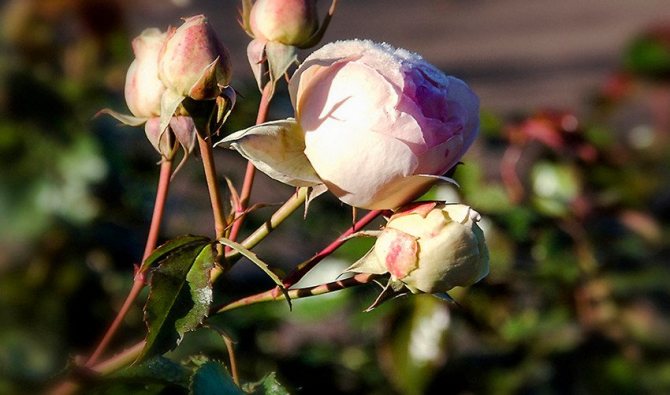

When these signs appear for roses, they prepare liquid solutions of complex fertilizers and irrigate the bushes with them. The concentration of such a solution should be 2 times less than that indicated on the package.
Fertilization stages and options
Fertilizers need to be applied in autumn in stages: after the end of flowering (mid - end of August) and from the last days of September to the end of October. The determining factors in the dosage of fertilizers are the condition of the plant, its age and the condition of the soil.
First stage
After the flowering period, the introduction of a solution of minerals will help to replenish the nutrients in the soil - potassium sulfate (30g) + superphosphate (100g) + 10l of water - at the rate of 10l for each adult bush. For young, not yet flowering, bushes, the amount of solution should be reduced by 2 times. Root feeding for them can be replaced with foliar feeding - spray with a solution of potash fertilizers.
If a sufficient amount of fertilizer is applied to the planting hole when planting, then re-fertilization is not required.
The lack of flowering in a rose of 2 or 3 years old indicates a lack of phosphorus. When it is introduced, an amendment should be made for the composition of the soil: heavy clay soil - reduce the amount, and on sandy lands - increase.
Reference! Lack of magnesium, nitrogen and potassium is observed in sandy loam soils, copper and molybdenum in peat soils, iron in clay soils, manganese in chernozems.
Second phase
At this stage, it is convenient to use rotted compost, and wood ash will enhance its effect. The resulting mixture should be sprinkled with the already cut bush and the soil around. With this method, nutrients enter the soil gradually, transforming into a form that is convenient for assimilation. In addition, the compost layer has a protective function - it protects the root system from frost.
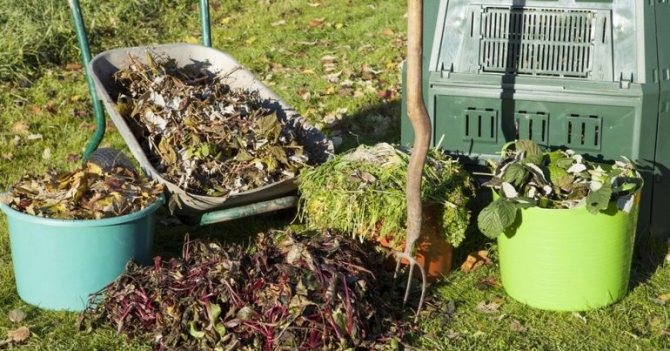

For autumn dressing, it is quite possible to prepare high-quality compost in 3-6 months using the preparation Baikal EM1.
How to quickly compost:
- put any plant residues and food waste in the designated place - the variety of components increases the nutritional value;
- add straw, peat, sawdust that has begun to sweep - they retain moisture;
- sprinkle each layer with earth and pour the preparation prepared according to the instructions.
Information! A big plus of such compost is that the preparation destroys the pathogenic environment, which minimizes the risk of contamination of the plant with harmful microorganisms.
Other feeding options:
- potassium sulfate (1 tablespoon) + potassium phosphate (2 tablespoons) + boric acid (1/2 tsp) + 10 liters of water - in warm regions, water in the first and last decade of September, in cold regions - in the last decade of August and the first decade of September;
- potassium monophosphate (1 tbsp. l.) + superphosphate (1 tbsp. l.) + 30 l of water - spray the bushes in late August and late September (early October);
- "Autumn" balanced universal complexes - potassium monophosphate, Autumn Kemira (NPK 4.8: 20.8: 31.3 + micro), Kemira Lux, Fertika Autumn.
If desired, before sheltering a rose for the winter, you can put phosphorus fertilizers in granules into the soil and scatter 1 glass of ash around the bush or scatter ash (1 glass) and double superphosphate (1-2 tbsp. L.), Followed by mulching with rotted manure.
Terms of feeding
Fertilization should be started immediately after the end of the flowering period.In autumn, plant feeding is carried out in two stages: at the beginning of September, and then again at the beginning of October.
In the first stage, you can use both liquid and dry fertilizers. In early October, the air temperature drops, so spraying and watering roses with liquid solutions can harm plants and cause rotting of the root system. Therefore, in the second stage, it is recommended to use only granular and dry dressings.
Root top dressing
Before the onset of cold weather, a complex of ready-made fertilizers can be used for feeding. Liquid complexes of nutrients are well absorbed by plants. If you use fertilizers in granules, then they have a prolonged action time, that is, substances are assimilated gradually and with the necessary potential.
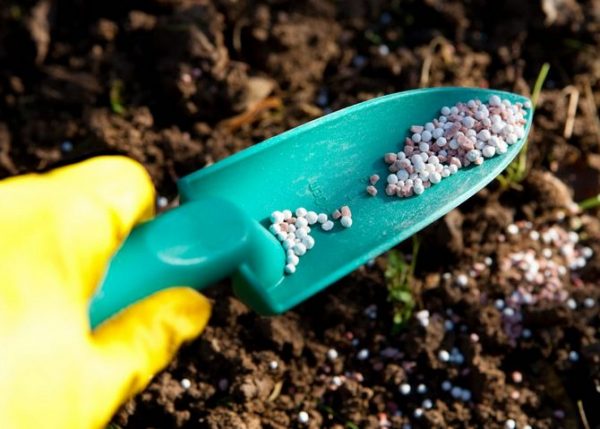

You can create a balanced fertilizer yourself. For this purpose, 16 grams of potassium monophosphate is dissolved in 10 liters of water together with 15 grams of superphosphate. This fertilizer is quite enough for processing plants on an area of up to 5 square meters.
Organic fertilizers
In the fall, you should not abuse organic fertilizers for roses. Most of them contain nitrogen, which will cause vigorous growth of young shoots of the bush. Such young branches will be most vulnerable to the effects of cold weather and can cause rotting of the entire plant.
It is recommended to feed the flowers with organics only once - in September, using one of the components listed below in the article.
Ash
This ingredient is essential for roses and can be used in the form of a powder or an aqueous solution. Ash does not contain nitrogen, but it is a source of many useful elements - magnesium, calcium, boron, sodium.


The rules for fertilizing rose bushes with ash are listed below:
- For foliar treatment of plants, an aqueous solution of ash is prepared (200 g of substance per 10 l of water), which is sprayed on the bushes in the morning or evening.
- Irrigation of bushes should not be carried out in bright sunlight and at dusk, since in the first case the solution will leave burns on the leaves, and in the second it can cause fungal infections.
- In dry form, wood ash is used to cultivate the soil around plants - about 3 liters of powder is consumed per 1 m².
- For irrigation, an aqueous solution of ash is prepared (100 g of substance per 10 liters of water) - the agent is infused for a week, and then applied at the root in an amount of 0.5 liters per plant.
Compost
This substance will not only provide the roots of roses with the necessary nutrients, but also protect the plants from winter frosts. It is recommended to use the compost during the autumn re-feeding, spreading it evenly around the bushes.
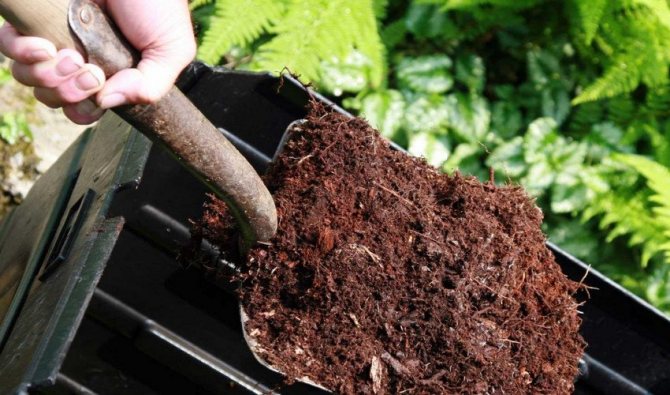

There is no need to sprinkle the fertilizer with soil - the compost will slowly decompose throughout the winter, giving nutrients to the roots. The average consumption rate of such fertilizer is 4 kg per 1 m².
Did you know? One of the most amazing varieties is the Chameleon roses - during the day these flowers have a rich red color, and with the onset of night they turn white.
Onion peel
This fertilizer contains vitamins and phytoncides that increase the immunity of roses and protect them from diseases and pests.
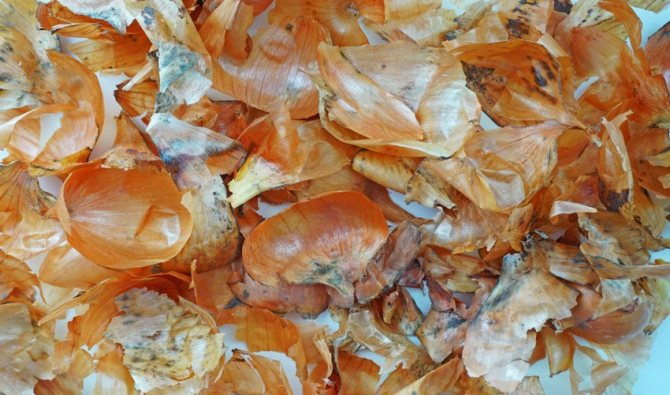

You can use onion peels as a top dressing in various ways:
- For spraying, a decoction is prepared - add 2 cups of husk to 10 liters of water, bring the mixture to a boil and let it brew for 4 hours. Roses are irrigated with chilled broth.
- For watering the plants, an infusion is used - the onion peel is poured with warm water (2 liters of liquid per 500 g of peel), covered with a lid and left for 24 hours. About 500 ml of liquid infusion is applied under one bush.
- You can add some onion husks to the compost by spreading the fertilizer on the ground around the plants.
Manure
Fresh manure contains a lot of nitrogen and various harmful microorganisms, therefore, in its pure form, it cannot be used for feeding flowers in autumn. But other organic fertilizers can be prepared from this ingredient.


The main ways to use manure to fertilize rose bushes are listed below:
- Compost can be made from the specified fertilizer - for this you need to build a wooden container with a lid and put manure into it, pouring a small amount of earth into each layer. As a result of decomposition processes, the temperature of the mixture rises to + 70 ° C, therefore, in a year you can get high-quality compost.
- Manure can be used to make humus by piling it up and leaving it for 1–2 years to get rid of excess ammonia. Ready-made humus is laid out around the plants to increase soil fertility. For 1 m², 3-4 kg of humus is enough.
- A concentrated mullein solution can be obtained from manure if diluted with water in a ratio of 1:10. The tool must be insisted for a week, and before watering the plants, dilute it with water in a 1: 2 ratio. It is recommended to apply 0.5 liters of fertilizer for each bush.
Bird droppings
In its pure form, fresh manure contains a lot of nitrogen, but it also contains useful trace elements - zinc, magnesium, sulfur, potassium, etc. This substance will help enrich the soil with nutrients, but it must be used with caution so as not to burn the roots.
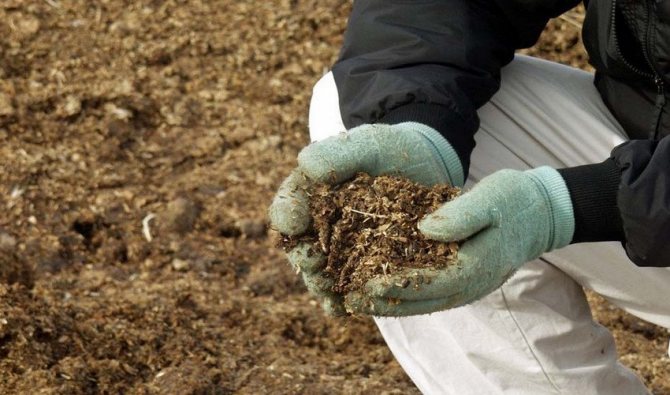

The main methods for preparing organic fertilizer from poultry manure are listed below:
- The substance can be used to prepare liquid root dressing - for this, rotted droppings are diluted with clean water in a ratio of 1:10 and each bush is watered with 400-500 ml of this solution.
- If only fresh bird droppings are available, then it is diluted with a large amount of water (1 part of the substance is 20 parts of liquid) in order to reduce the high concentration of ammonia.
- You can use dry rotted droppings - for this you need to mix it with the same amount of soil and lay it around the rose bushes.
Important! In dry form, rotted droppings will not only nourish the roots of the plant, but will also provide them with additional insulation in the cold season.
What are the top dressing: foliar and root
There are two ways to fertilize any crops, including roses:
- Foliar dressing (spraying) - fertilizers are applied by spraying the aerial part (leaves, trunk). As a rule, in this way the plants are fed with microelements, for example, magnesium, boron, manganese. The main advantage of spraying is that the plant is fed fairly quickly, and the soil composition does not change.


- Root dressing - fertilizers are applied at the root in a dry form (the substance is laid out in a near-stem circle or embedded in the ground, and then watering is carried out or precipitates dissolve them), or in liquid form (the plants are simply watered at the root with a solution). With the help of root dressing, as a rule, macronutrients are added: nitrogen, potassium, phosphorus.
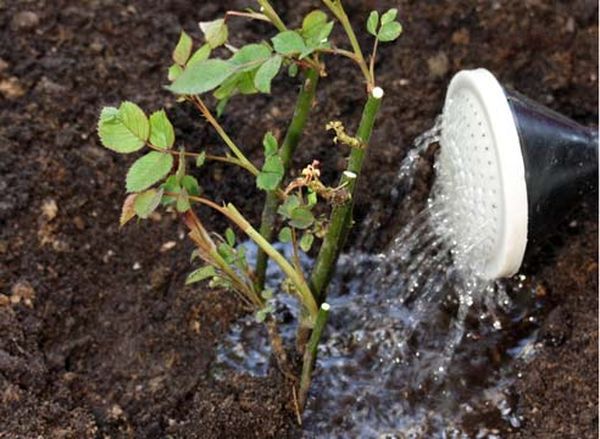

By the way! There is a very convenient technology of root feeding - it is necessary to make a round groove around the stem of the rose to a depth of about 7 centimeters (while the distance from the trunk to the groove is about 15 cm). And already in this furrow to apply liquid or dry fertilizers.
Mineral fertilizers
After prolonged flowering, rose bushes are weakened and need to recuperate, therefore, before wintering, it is recommended to fertilize them well with minerals that will help the plants better survive the winter and give them strength for active growth in spring.
Mineral fertilizers are applied twice - in September and October. The main requirement for such autumn dressings is a high content of potassium and phosphorus in them.
Potash
Potassium can be used as a source of potassium (it contains potassium, sulfur and magnesium).Feeding roses with this fertilizer strengthens the plant stems, increases the number of buds and protects them from fungal infections.
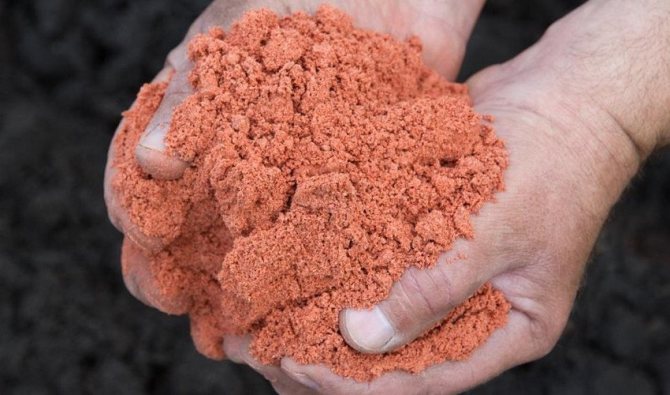

The rules for using potassium magnesium for feeding roses are listed below:
- At the end of September, you can prepare a basic solution for spraying bushes - for this, 20 g of the substance is dissolved in 10 liters of water. For irrigation of roses on an area of 1 m², 5 liters of the resulting solution is enough.
- The second top dressing is recommended to be applied dry - for this, a small groove is dug around the bush at a distance of about 20 cm, into which potassium magnesium powder is introduced. Fertilizer consumption rate per 1 m² - 20 g.
Important! An excess of potassium in the soil leads to the fact that the flowering of roses begins later than the date, and some buds remain underdeveloped and rot, so you need to strictly adhere to the instructions for using fertilizers.
Phosphorus-potash
This group of fertilizers is very important for bushes, as it helps them to successfully survive the effects of low temperatures and long wintering, increases the resistance of roses to diseases and helps to strengthen the trunk.
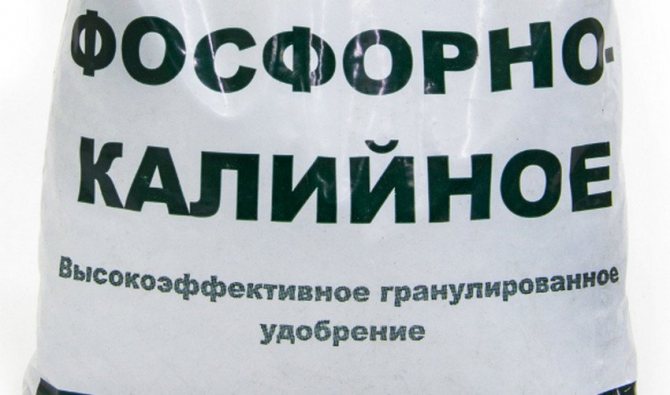

Phosphate fertilizer options are listed below:
- For watering plants, you can prepare a mixture by dissolving 15 g of potassium monophosphate and superphosphate in 10 liters of water. The specified amount of mortar is enough to process an area of 5 m².
- To stimulate the rapid lignification of the stem, you can use a phosphorus concentrate prepared from 50 g of superphosphate and 1 liter of hot water (temperature + 65 ° C). The resulting product is diluted with clean water in a ratio of 1:10 and used for spraying bushes.
- To prepare a nutritious root dressing, you can mix 10 g of potassium sulfate, 25 g of superphosphate and 2.5 g of boric acid, and then dissolve them in 10 liters of water. For watering one bush, it is recommended to use 1 liter of fertilizer.
- In October, it is better to give preference to dry potassium-phosphorus fertilizers - a small trench is dug around each bush and 30 g of potassium sulfate and 40 g of superphosphate granules are placed in it. Then a little water is poured into the trench and sprinkled with earth so that the introduced substances dissolve well in the soil.
Nitrogen
It is not recommended to apply nitrogen fertilizers under rose bushes in the fall.


They cause continuous growth of the green mass, as a result of which the bush cannot pass into the winter state of dormancy for a long time and is wasting energy on growing leaves.
Did you know? The rose is the national flower in the United States, Iran and England.
Feeding methods
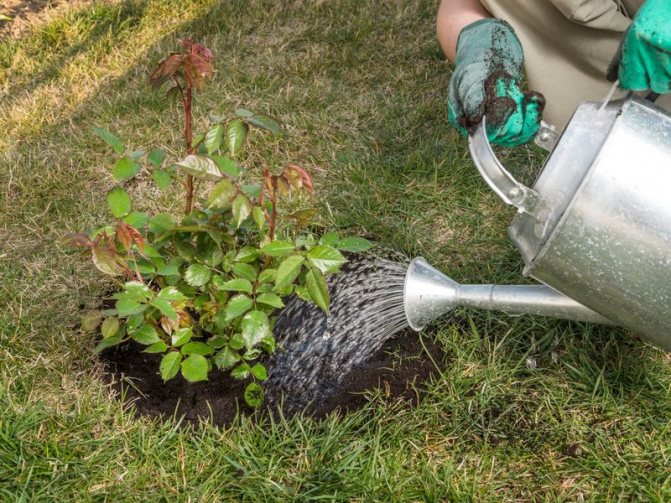

Some types of dressing must be applied very carefully, avoiding contact with the foliage of the plant.
Fertilizers can be applied at the root, sprayed over the foliage, added to the soil when planting.
The most common ways to feed roses are:
- Basal This method is best used in August or early September. For this, both ready-made fertilizers and prepared independently are suitable. You can make a solution of monophosphate and potassium superphosphate (15 g / bucket) or 30 g of potassium magnesium / 10 l of water. Pour the resulting liquid abundantly into the soil under the bush.
- Foliar The method is suitable for spraying the plant at the end of September. It is recommended to dissolve 5 g of superphosphate in a liter of hot water. Add the resulting concentrate to a bucket of water and spray the leaves and stems of the rose.
- Into the holes during landing When planting in a pit, a mixture of soil, urea and superphosphate is added. After planting, the bush must be watered and tied to a support.
- Dry method Dry, granular or powdery fertilizers are applied in late September or early October. Unlike liquid, root and foliar dressings, dry dressings do not begin to act immediately, but continue to "work" until spring.
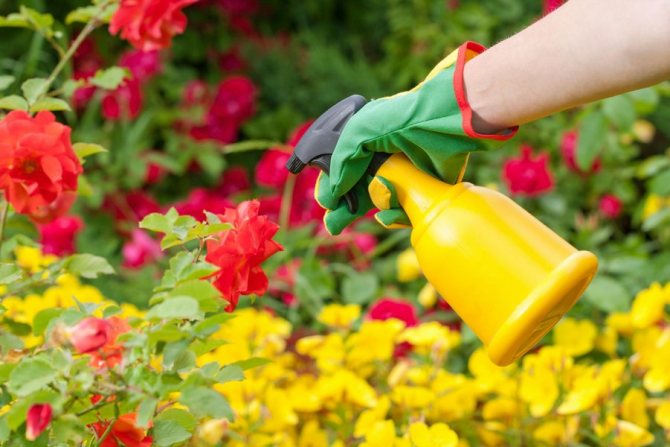

Another way to fertilize flowers
Folk remedies for autumn feeding roses
In addition to the fertilizers listed above, roses can be successfully fed with folk remedies. They do not contain chemicals, but they significantly improve the composition of the soil and are distinguished by their low cost.
The basic rules for feeding plants using folk methods are listed below:
- Yeast watering solution - prepared from 10 g of dry yeast, 10 liters of warm water and 40-50 g of sugar. The tool is infused for two hours, and then diluted with clean water in a ratio of 1: 5.
- Banana peel - it is buried in the soil near the bush and used as a natural source of potassium.
- Crushed eggshell - the product is mixed with a small amount of earth and laid out around the plants. It is recommended to use 2 glasses of crushed product for 1 m².
- Coffee grounds - the product must be distributed over the surface of the earth around the bushes, and then loosened up the soil, mixing it with the grounds. This fertilizer contains calcium, magnesium and potassium.
- Used tea leaves - mixed with the soil around the bushes, contains a lot of useful microelements.
Bird droppings
Feeding with poultry droppings is suitable for pronounced flower problems - yellowing and falling leaves, weak shoots, lack of nitrogen, etc. This type of fertilizer is characterized by a fast action, so the result will be visible already in the next season.
One of the options for preparing top dressing: a bucket of litter with a capacity of 10 liters has 20 liters of water, the time for infusion is about ten days, and the shelf life of the product is a week.
A method of introducing dry manure into the soil is possible, but precautions must be taken: it is optimal to use the rotted product, and after feeding, abundant watering of roses is necessary.
Features of caring for roses in autumn
In addition to applying top dressing, in the autumn period it is necessary to carry out preventive measures against diseases that can affect plants in the cold season.
For the winter, it is recommended to build a shelter for the bushes, which will prevent their roots and branches from freezing, as well as protect thin shoots from damage under the weight of snow and gusts of cold wind.
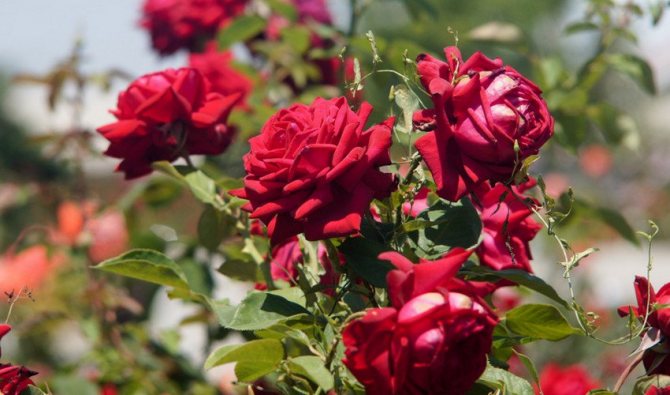

Disease prevention
In the cold season, roses are most vulnerable to diseases and infections.
To prevent infection of the bushes, a number of preventive measures are taken in the fall, which include:
- timely fertilizing with fertilizers;
- mandatory removal of leaves before sheltering plants;
- spraying the bare branches of the plant with a 3% solution of ferrous sulfate;
- instead of vitriol, you can use store-bought fungicides, applying them according to the instructions on the package.
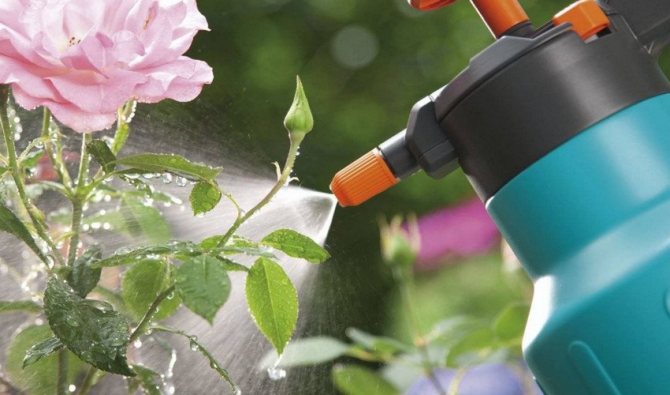

Preparation for warming roses
In order for the bushes to successfully overwinter and please with lush flowering with the onset of warmth, you need not only to protect them well from frost, but also to properly prepare the plants for winter.
The basic rules for preparing roses for insulation are listed below:
- from the beginning of September, you need to stop watering the roses so as not to oversaturate the soil around the roots with moisture;
- to stop the active growth of young shoots, you need to pinch their edges in early September;
- to avoid the autumn awakening of sleeping buds on the trunk, the procedure for loosening the soil around the roses is not carried out in the fall;
- in the second half of September, buds, weak and immature shoots, as well as branches that grow inside the bush are removed;
- trimming and burning of all leaves is carried out at the end of October;
- in early November, it is recommended to huddle the trunks of the plants to protect them from frost. However, if winter in your region is accompanied by numerous thaws and rains, then hilling can cause rotting of the bush, so it is better to refuse this procedure;
- in mid-November, the branches of the bushes are transferred to a horizontal position, gradually tilting them to the ground - this will help protect fragile shoots from breaking and allow you to better cover them.A layer of polystyrene or wooden boards is laid between the lowered branches of the bush and the ground.
Shelter roses
The essence of this procedure is to create an additional air gap between the shoots of the bush and the environment.
Find out when, how and what to cover roses for the winter.
On the one hand, it must protect the branches of roses from cold air, and on the other, prevent them from becoming rotten.
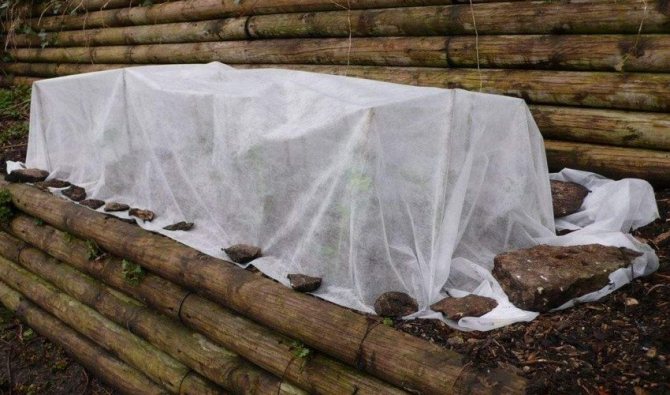

The basic rules for shelter are listed below:
- it is best to stretch the covering material on pre-installed arcs placed over the branches of the plant;
- usually roses are covered at the end of November after a stable temperature of about 0 ° C is established outside;
- dense spunbond or spruce spruce branches are used to shelter plants - they are laid out on prepared arcs;
- a water-repellent layer of roofing material or thick cardboard is laid on top of the covering material;
- last year's leaves and snow can be poured onto the top layer of the shelter for better protection from freezing temperatures;
- if thaws often occur in winter, then the plants need to be ventilated so that they do not get locked up. For this, the shelter is slightly raised, providing the plants with fresh air during the daytime;
- in spring, roses can be freed from shelter only after the threat of frost below -10 ° С disappears. The protection is removed gradually, starting with regular airing during the day.
Important! The film cannot be used as a covering material for roses - it does not adhere well to the bushes, and if fixed, it prevents air circulation around the plants.
The correct cultivation of roses on the site helps to decorate its territory with lush flowering bushes. In order for the plants to delight you with large and beautiful flowers with the onset of warmth, you need to timely fertilize in the fall according to the recommendations listed in the article.
Optimal timing
The choice of fertilizer that should be fed to the queen of the garden before the onset of winter directly depends on its variety and region of growth.
Species features
Climbing the rose is distinguished by a special sensitivity of the root system, therefore, in the autumn period it is necessary to strengthen the underground part of the plant.
- For the first procedure, a complex of boric acid, superphosphate and potassium sulphide is used.
- The second - must necessarily include phosphate-containing components.
Before fertilizing, the soil is carefully loosened, then covered with a layer of mulch.
The recommended time for agrotechnical works is August / September.
Regular. Prefers purchased preparations in the form of granules, which are distributed around the perimeter of the peri-stem circle and spilled with water. In autumn, the culture is especially in need of potassium magnesium and phosphorus.
Events are held at the end of August, duplicated in mid-September. In the future, the bush is subjected to major pruning.
Floribunda. There are a number of subtleties regarding the use of fertilizers. They are brought in once in early November, scattered over the surface of the soil near the stem. Preference is given to potash and phosphorus, chlorine-containing agents are prohibited. After the plant is covered for the winter. It is allowed to additionally use rotted manure for the second feeding.
Sadovaya. Needs double fertilization in autumn.
- For the first, a composition of calcium, phosphorus and a small amount of potassium should be prepared;
- The second is done with organic matter - manure or compost.
Park... Due to the breeding of the variety through complex selection, the plant must be carefully prepared for the cold season.
Feeding is allowed only after major pruning. Potash-phosphorus preparations are used as fertilizers.
Regional features
The timing of fertilizing, depending on the territory:
- In the South of Russia, the first falls on September 20-30, the second - on October 1-10.
- In the Urals and Siberia, the optimal periods are August 10-20 and September 1-10.
- In the middle lane, it is recommended to carry out work on August 20-30 and September 10-20.


